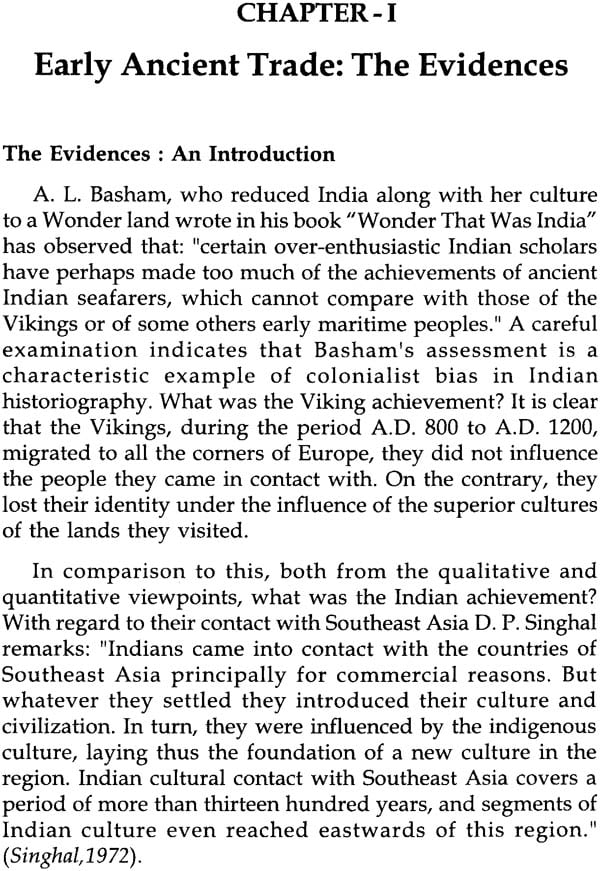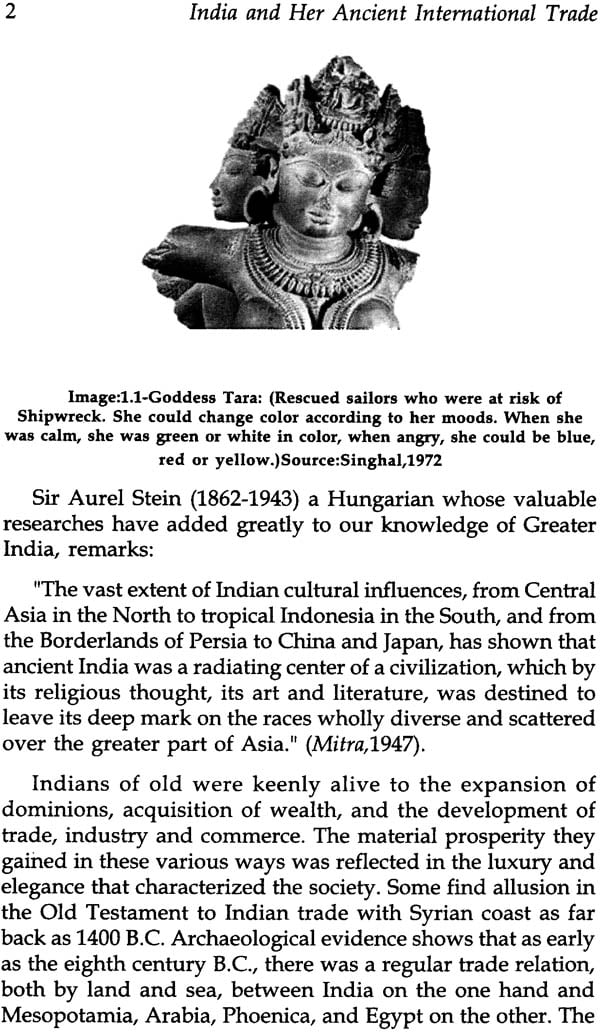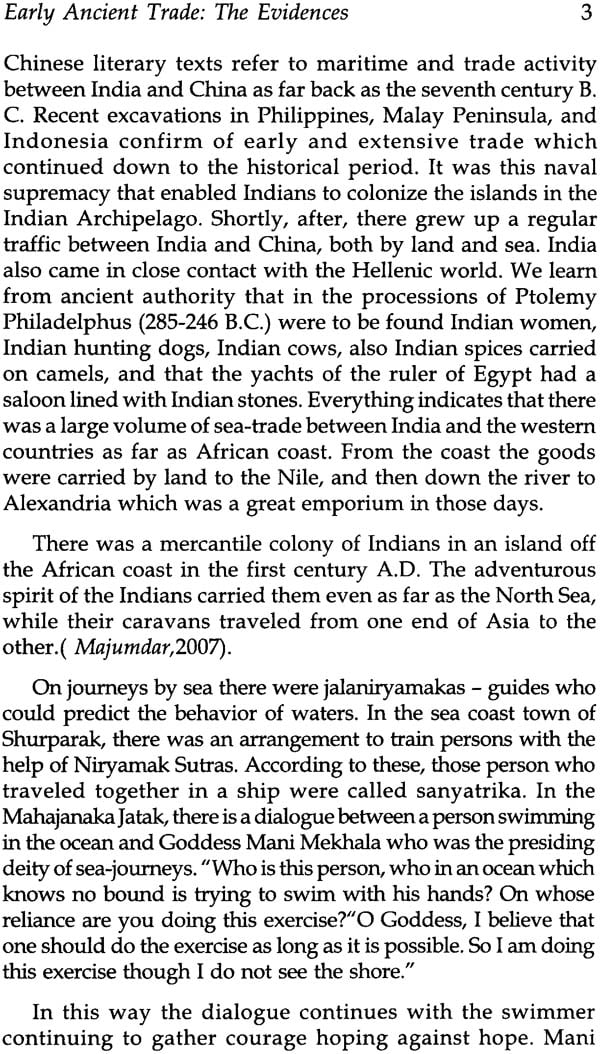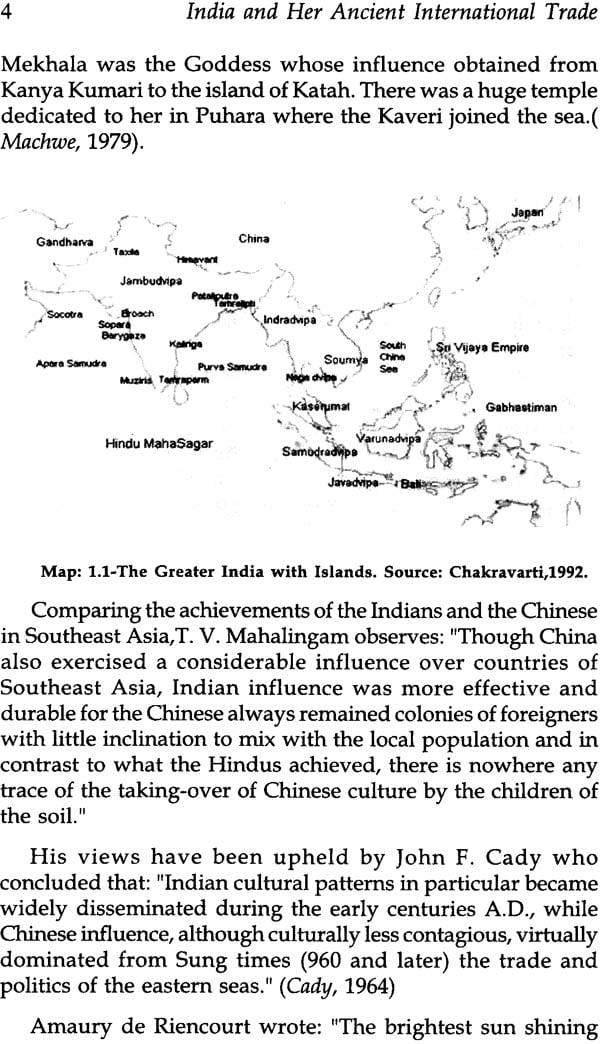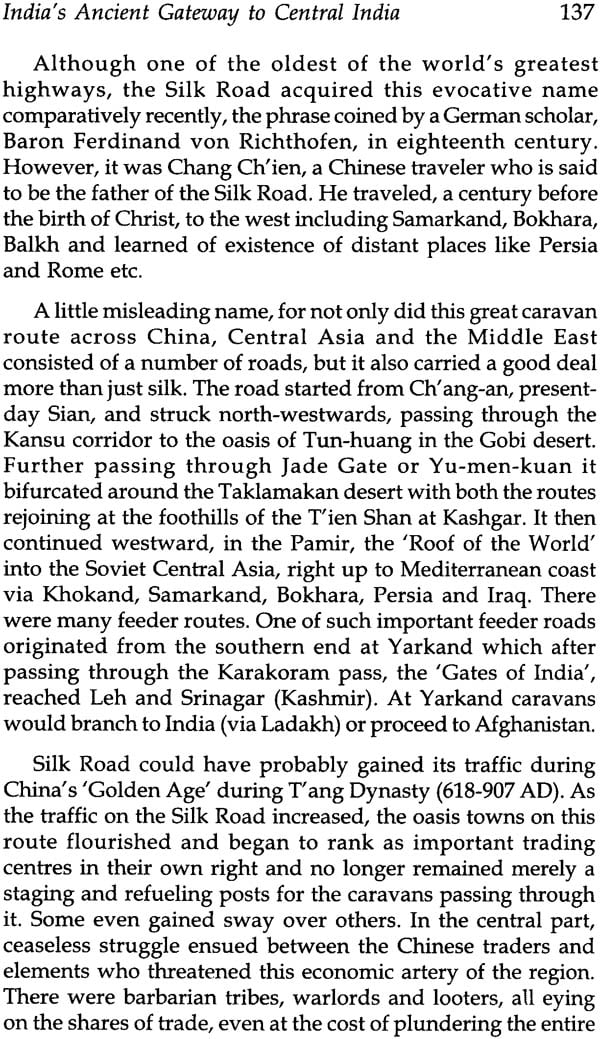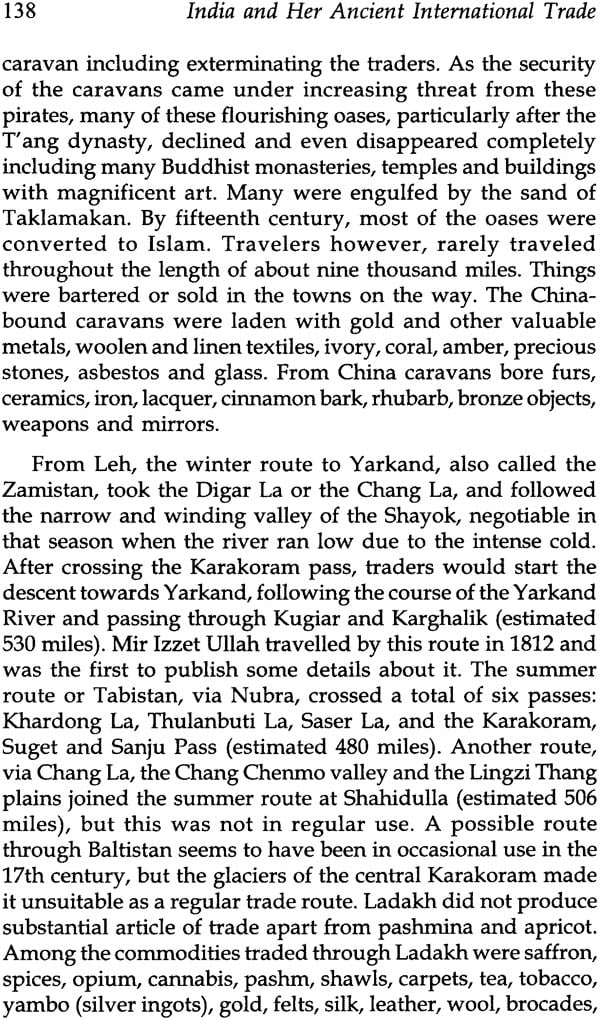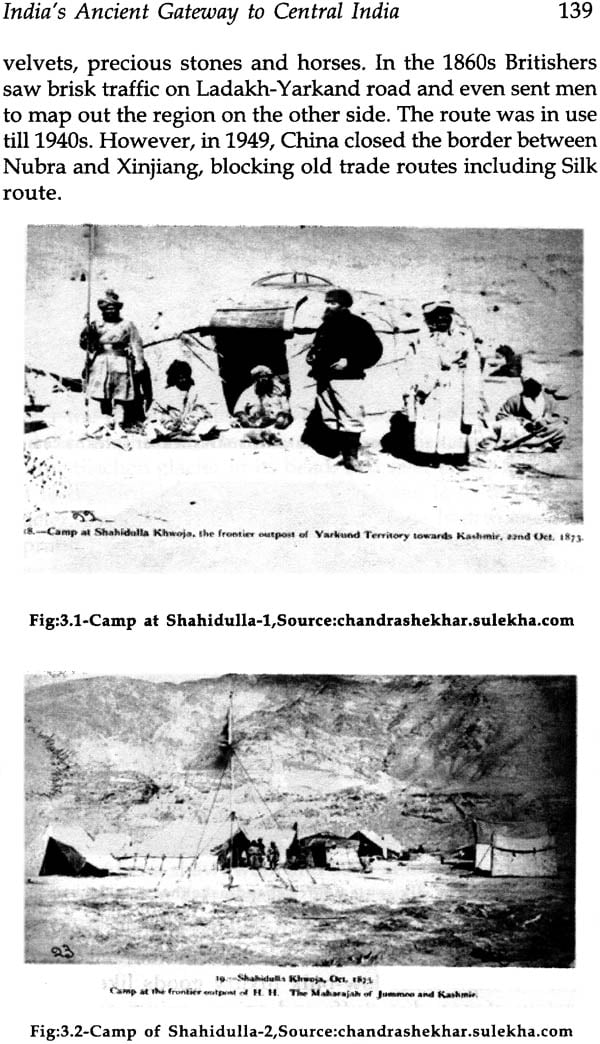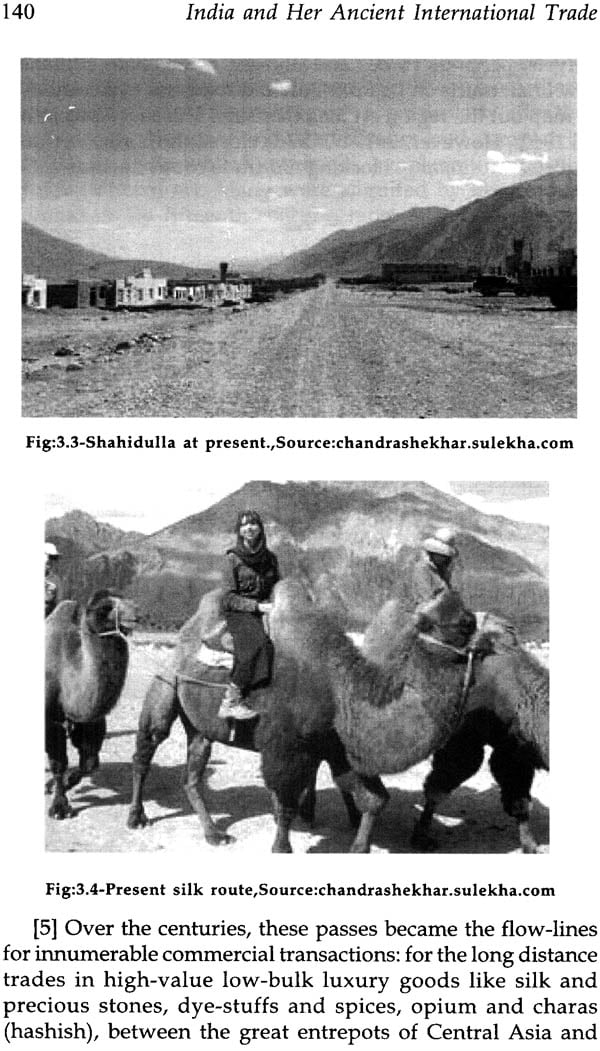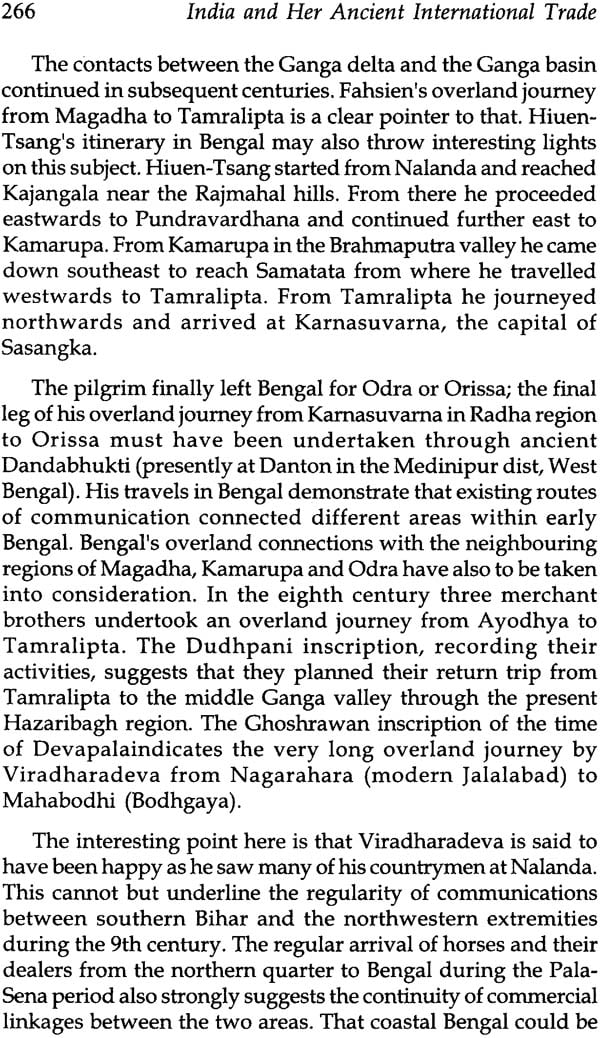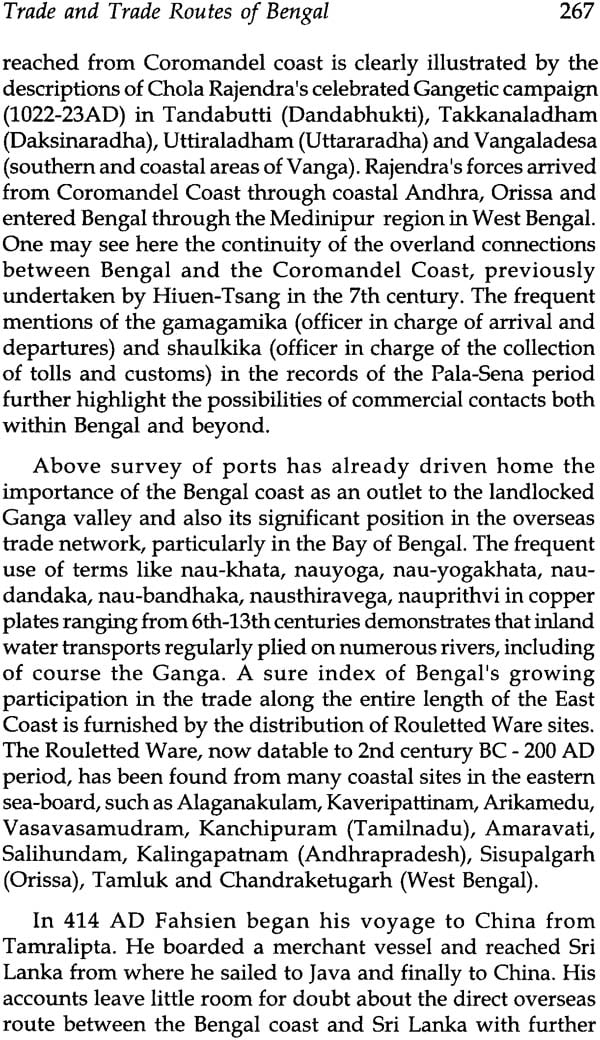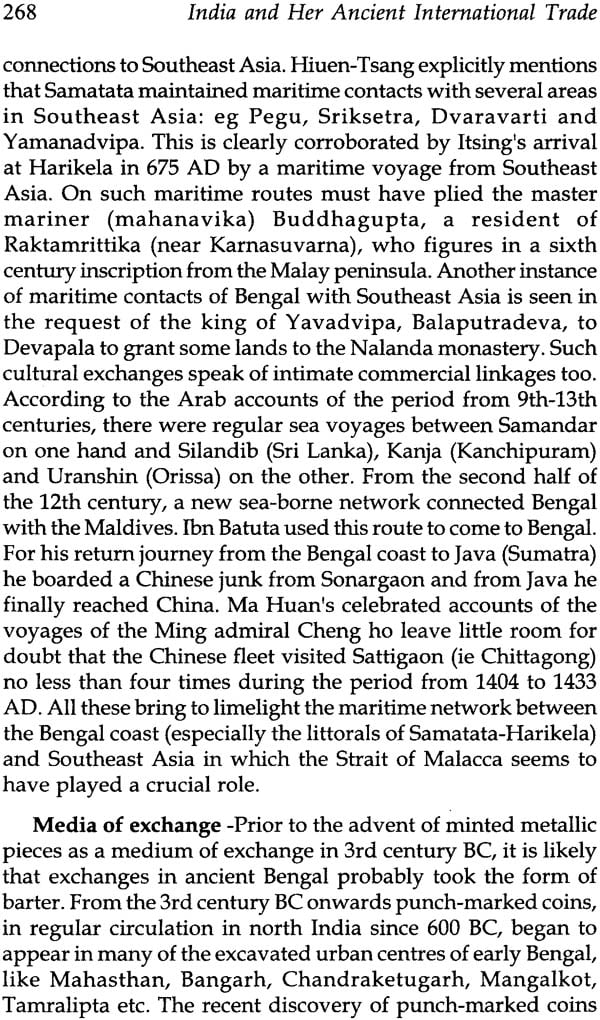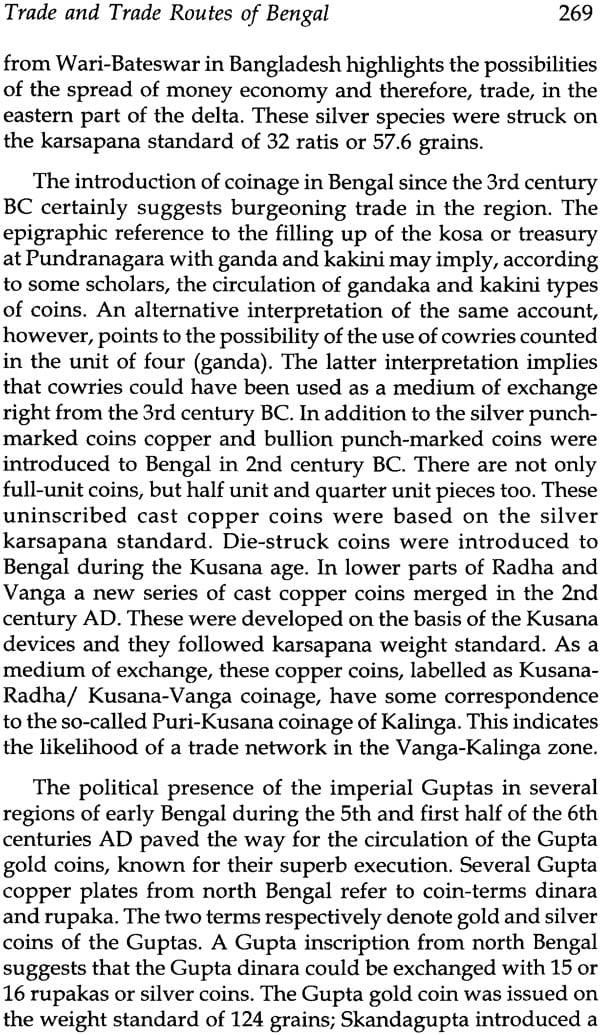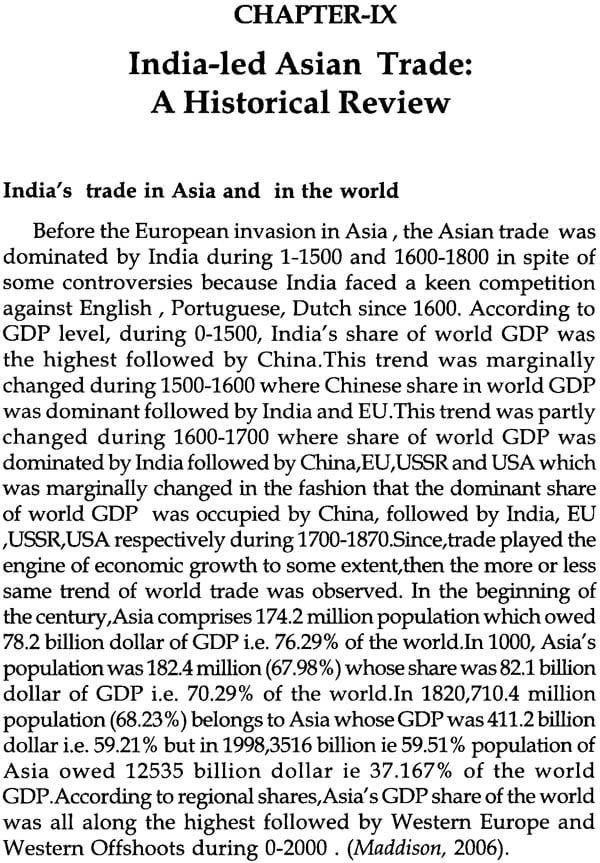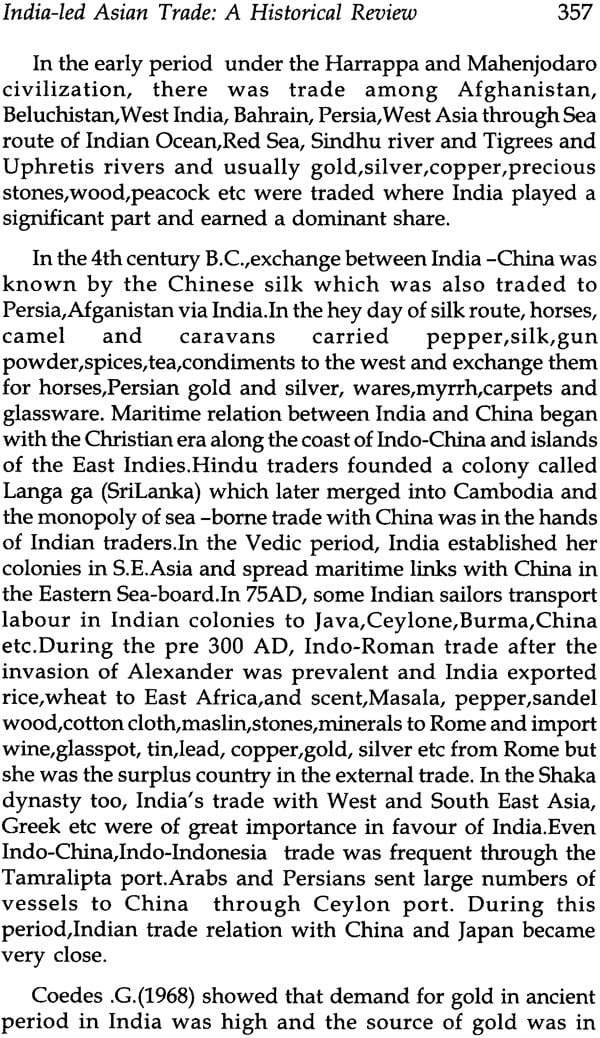
India and Her Ancient International Trade
Book Specification
| Item Code: | NAM455 |
| Author: | Debesh Bhowmik and Raj Kumar Sen |
| Publisher: | Synergy Books India |
| Language: | English |
| Edition: | 2015 |
| ISBN: | 9789382059295 |
| Pages: | 391 (72 B/W Illustrations) |
| Cover: | Hardcover |
| Other Details | 9.5 inch X 6.0 inch |
| Weight | 770 gm |
Book Description
The book "India and Her Ancient International Trade" has been written in keeping with the connection or Ph.D. thesis entitled "Feasibility of An India-led Asian Economic Bloc" where Debes Chandra Bhowmik (Debesh Bhowmik) showed the patterns, direction, and control of ancient trade of India at least before European invasion. The emphasis on maritime trade of India, silk route, spire trade, ancient trade routes, including the Bengal's trade performance and Bangal's trade routes were given with a special care and analysis. Indian relation with other countries in early trade showed an important event of the area of explanation. South Indian trade and commerce, sea-trade of Orissa, and Bengal are an added clarifications of ancient trade. Eurocentric Asia, North East Indian trade are of special are of discussion. India-led Asian trade is included as a separate chapter to quence the thrust of the goal of the book. The Book may be a useful reference for those who would try to explain Indian Ancient trade.
Debes Chandra Bhaumik passed BA(H) and MA in Economics from Kalyani University during 1971 and 1973 respectively and obtained Ph.D in 2011 from Rabindra Bharati University (Kolkata). Since 1990, he was associated with International Economic Association, Indian Economic Association, Bengal Economic Association and International Institute for Development Studies (Kolkata) and contributed more than 110 important academic articles. His latest books are "Euro crisis and International Liquidity Problems" (2014) and "Asian Economic Integration-Feasibility of an India-led Economic Bloc" (2014).
Raj Kumar Sen is a retired Professor of Economics and Director of Centre for Studies on Environment and Sustainable Development of Rabindra Bharati University, Kolkata. Her is the Chairman of the International Institute for Development Studies, Kolkata. He was the President of Indian Economic Association (2003-04) and Bengal Economic Association (2002-05) and now Managing Editor of Indian Economic Journal. Beekshan-the journal of Bengal Economic Association. He has written innumerable articles in international and national journals of Economics and written and edition many important books. He guided more than 32 research scholars. He attended and contributed papers in International Economic Association consecutively 7 times.
The Book "India and Her Ancient International Trade" endeavours to explain the role, pattern, directions and dominance of India's international trade in ancient times beginning since 3000 BC to prior to European entry into India although it covers the early ancient international trade and trade routes. It incorporates nine chapters, namely, [i] Early Ancient Trade: The Evidence, [ii] India's trade and Commerce and Trade Routes with abroad in ancient age, [iii] India's Ancient Gateway to central Asia: The Karakoram Pass, [iv] India's Maritime Trade, [v] Trade and trade Routes in Asia, [iv] Ancient trade and trade routes of Bengal, [vii] Ancient trade-Silk and Silk Routes including India [viii] Ancient Trade- The Spice [ix] India-led Asian Trade. The book also included several maps and routes charts of ancient trade which covered the India's trade relation with the counties abroad. The book is a useful document to research scholars and other professionals who will work on ancient India's international trade and her nature of dominance.
The current volume discussing India and Her Ancient International Trade gives a detail analysis of this subject matter distribution over as many as 9 chapters and bases an authentic testimony of destroying the myth that India was an agricultural and underdeveloped economy from the very beginning. Her trade relations with both East and West prevailed since the early ancient period as evidence from various literary and other sources. It is a matter of regret that Indian historians and economists did not work enough in this directions and naturally this area is relatively under researched and unexplored. The present author deserve applause for facting this research gap in a most convincing manner. We should remember the surplus trade that India maintained with the Roman civilization and the quest of Columbus and Vasco-Da-Gama to discover the sea trade route to reach India to get control over the spire trade where India could enjoy a monopoly situation. Different chapters of this book systematically and chronologically have given the description of India's ancient trade with different counties ,commodities and services, ports and sea-routes in different periods starting from the ancient to modern ages. The riches which India gained through trade continued even up to the middle of the 18th century when Cilve-the British General after entering Murshidabad-the capital of the then Bengal considered the city as 10 times more rich than London.
We sincerely hope that this noble endeavour of the author will get the attention of Indian Researchers and Economists will be attracted to explore the true nature of India's ancient trade and its impact on the world scenario when globalization prevailed in the true sense of the term.
It is true that the author had to depend on the large number of sources for their conclusion but all these show meticulously a prospect of an India-led Asian Trade in the near future.
| Preface | ix | |
| Foreword | xi | |
| List of Tables | xiii | |
| List of Maps | xv | |
| List of Images | xvii | |
| List of Figures | xix | |
| Chapter-1: | Early Ancient Trade: The Evidences | 1 |
| [1] | Introduction | 1 |
| [2] | Ancient Indian Knew Atlantic Ocean | 5 |
| [3] | Evidences from Ancient Literature | 6 |
| [4] | The West | 16 |
| [5] | The East | 25 |
| [6] | The Hindu period in the Indian Ocean: The naval power | 42 |
| [7] | Retrospect | 51 |
| [8] | Sailing down the stars of history | 56 |
| [9] | Maritime India in brief:0-1600 | 58 |
| Chapter-2: | India's trade and commerce and trade routes with abroad in ancient age | 65 |
| [1] | Commercial relation of India in the middle age | 65 |
| [2] | Ancient South India commerce | 88 |
| [3] | Roman trade with India | 99 |
| [4] | Ancient Africa and early India | 108 |
| [5] | State formation in Ancient North East Africa and Indian Ocean trade | 109 |
| [6] | Ancient North East routes in NE Africa and middle east | 118 |
| [7] | Trade route | 119 |
| [8] | The Goods | 120 |
| Chapter-3: | India's Ancient Gateway to Central Asia | 132 |
| [1] | The Karakoram pass | 132 |
| Chapter-4: | India's Maritime Trade | 149 |
| [1] | Origin of trade and commerce | 149 |
| [2] | Historical and commercial relation of India | 155 |
| [3] | Indian Ocean trade: Analytical content | 164 |
| [4] | The preview of Ancient Trade | 168 |
| [5] | Ancient Indian ocean trade: The hegemony | 177 |
| [6] | Ancient ship building and maritime trade | 184 |
| [7] | Maritime trade of Ancient Orissa | 187 |
| Chapter-5: | Trade and Trade Routes in Asia | 198 |
| [1] | Introduction | 198 |
| [2] | Asia in the Eurocentric thoughts | 198 |
| [3] | Ancient trade routes in Asia | 203 |
| [4] | Ancient trade partners: Cooch Bihar, Assam, Bhutan | 215 |
| [5] | Historic aspect of Craft and Trade in India | 228 |
| [6] | Exportable and Importable | 235 |
| Chapter-6: | Ancient trade and trade routes of Bengal | 247 |
| [1] | Bengal in the east | 247 |
| [2] | Maritime trade of Bengal | 250 |
| [3] | Trade and commerce | 254 |
| [4] | Manipur in the eyes of foreign historians | 279 |
| [5] | Trade centres and trade routes in Bengal | 284 |
| [6] | Grand Trunk Road | 289 |
| [7] | Chitagang through the Ages | 300 |
| Chapter-7: | Ancient Trade -Silk and Silk route | 304 |
| [1] | Silk-An Introduction | 304 |
| [2] | Rome look East | 306 |
| [3] | Kushan empire and Buddhism | 309 |
| [4] | Golden age emerges | 309 |
| [5] | Transforming the Euro Asian silk market | 313 |
| [6] | The Mongals and the Twilight of the silk road | 317 |
| [7] | The Silk Road | 319 |
| [8] | Overland Silk Routes | 320 |
| [9] | Indian silk trade and silk route in the ancient past | 325 |
| Chapter-8: | Ancient Trade-The Spice | 333 |
| Section-I [1] | Introduction to spice trade | 333 |
| [2] | Origin of the spice trade | 333 |
| [3] | Beginning of the Arabic spic trade | 335 |
| [4] | The Spic trade in the Roman age | 338 |
| Section-II [1] | Indiab spice trade and trade route | 340 |
| [2] | Indian spic tradein the past | 346 |
| [3] | India's Spice trade today | 349 |
| Chapter-9: | India-led Asian Trade | 355 |
| [1] | India's trade in Asia and in the world | 355 |
| [2] | Performance of Bengal in Asian trade | 361 |
| [3] | India's trade with central Asia | 363 |
| [4] | Declining of India's Leading Role in Asia | 364 |
| Bibliography | 371 |
